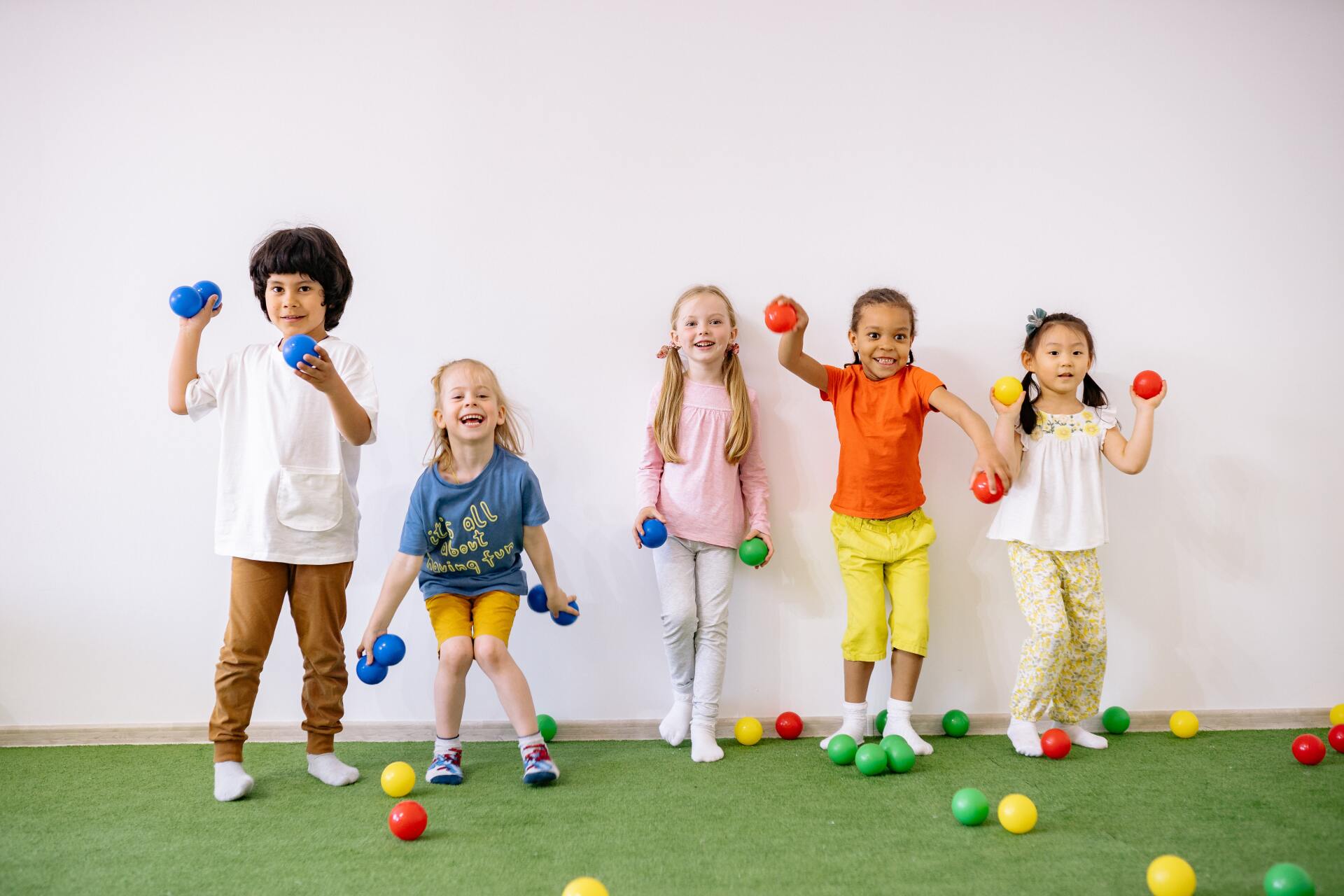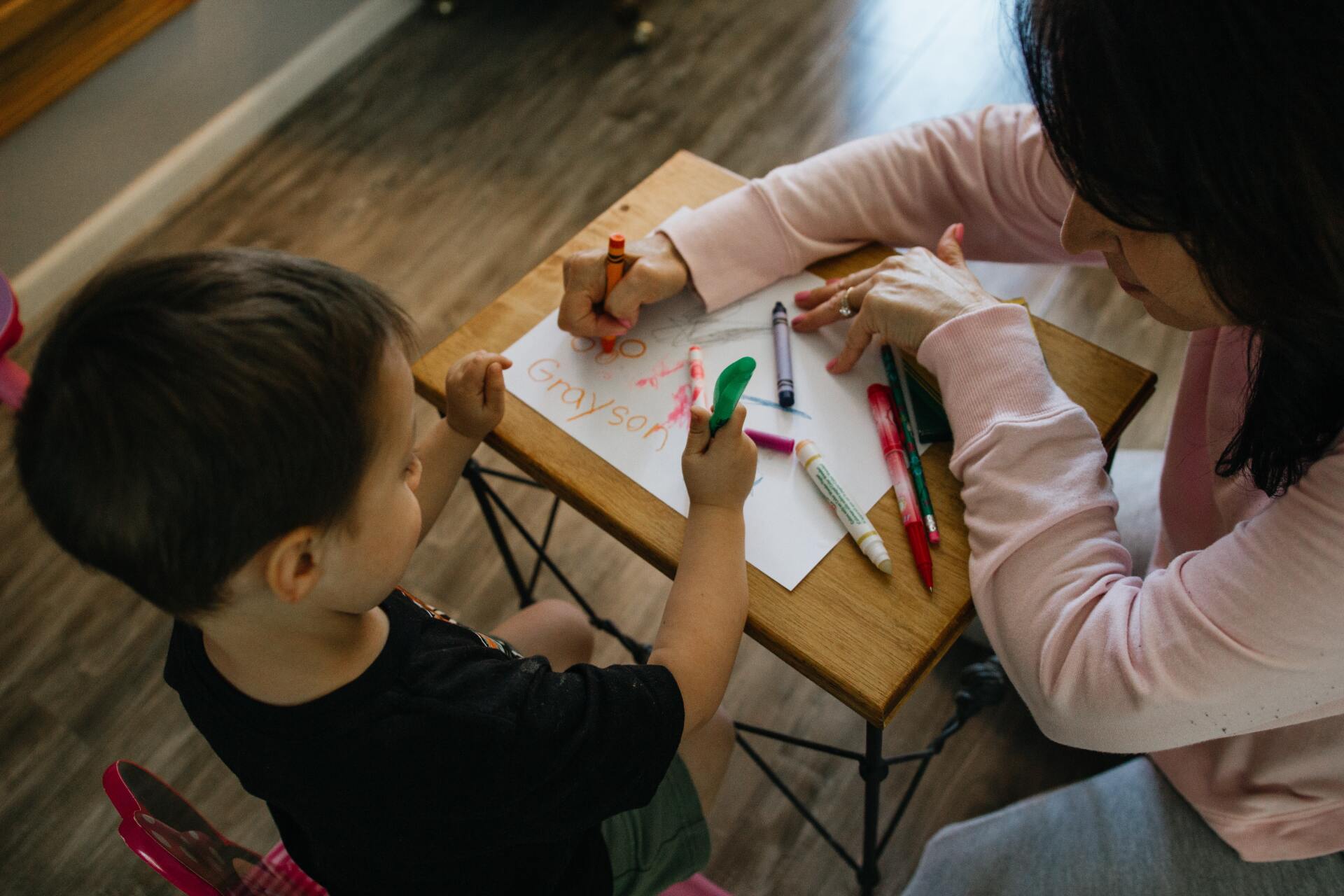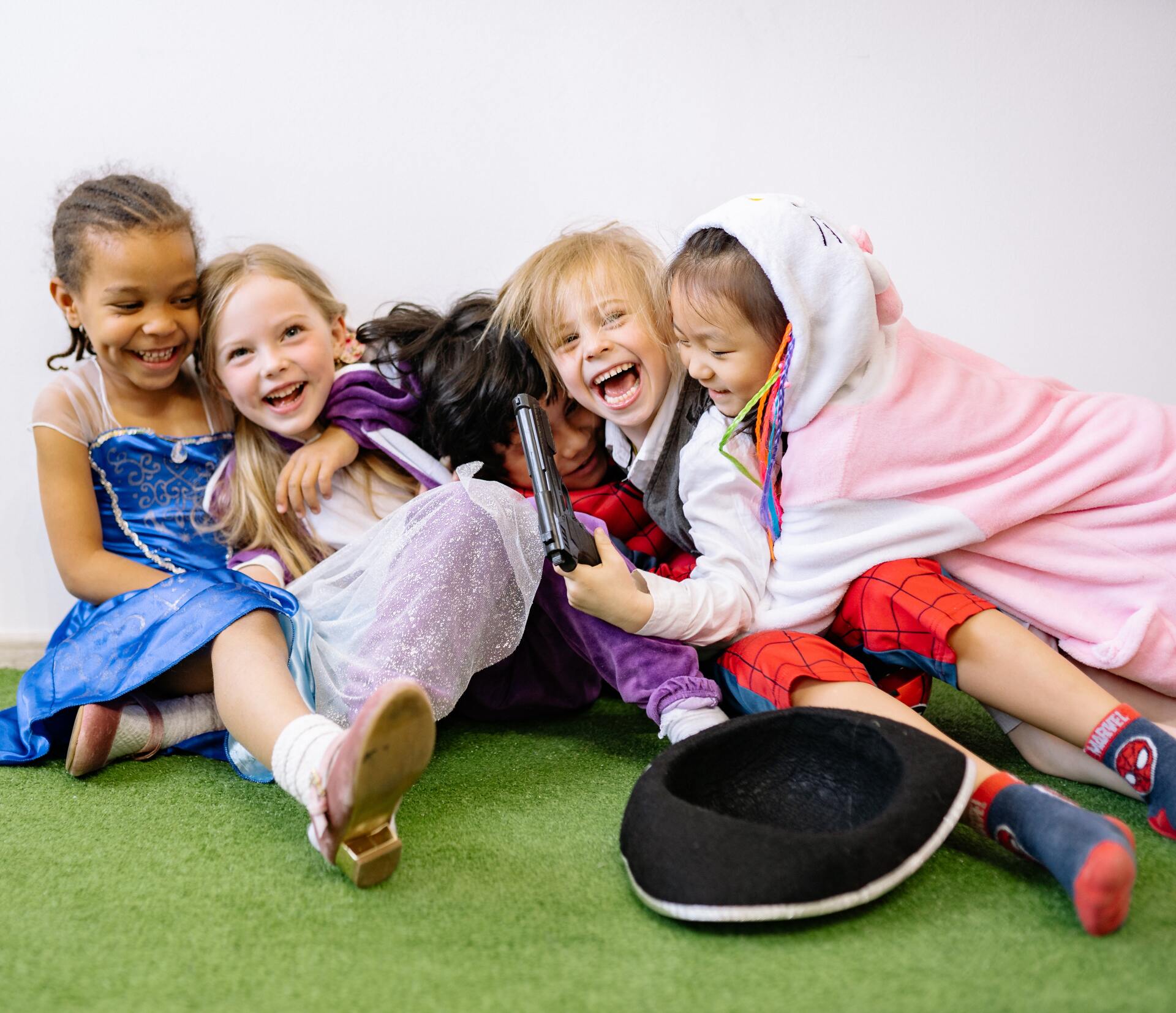
If I had a dollar for the number of times, I am asked what I do for a job - and once I say I'm in the early childhood sector I get a few replies. "Oh no, I don't know how you do that all day. Running around with all those children, stopping them from hurting themselves and each other, changing nappies and cleaning up after them. I've even heard people say "You're just baby sitters". Oh, my goodness. In the light of it being Early Childhood Educators' Day today, Wednesday 2 September - Thanks ACA Qld...I'd like to describe the types of people that do this job and their job tasks each day, for a wage/salary but actually for the LOVE of it. For all ECEC sector employees reading this, please be proud of who you are and what you do!!! I say SHOUT IT OUT LOUD and be extremely proud. This country wouldn't run without your amazing work. WHO ARE WE, KEY TRAITS!!! Patience - This is the most important as children are not adults and process things differently than adults so the gaps need to be bridged between what you know and what they understand, this can be frustrating. You have to repeat yourself a lot and explain a lot. Often you are dealing with distractions and focus grabbers. You need a deep well of patience to keep you from becoming frustrated, am I right? Educators also understand that children have a reason to be childlike - they are children, unlike adults who are fully grown yet still age like a 4-year-old. Oh, dear. The ability to hide frustration or annoyance - Children pick up on the slightest shift in your emotional demeanour. So it is important to learn how to hide your tiredness, frustration, so you can stay happy all the time. It is okay to let a child know when you are unhappy with him or her when they aren't making the right choices. ECEC educators are experts at hiding boredom, exhaustions, and frustration. Keeping calm in an emergency - Children freak out when adults freak out, this can make a very stressful situation. Educators can keep their cool when things turn crazy, even if your heart is pounding and things around you are chaotic. Working with children especially a large group means maintaining a calm presence when things are overwhelming - children look to you for how to act and deal with everything. Isn't this the truth. Communication - Professional educators know it's not necessary to "dumb down" information but rather use age-appropriate examples through stories and talking about situations to relate is the way educators teach new skills and explain new concepts. Enthusiasm - Educators enjoy spending time with children and children learn from them due to the enthusiasm for the things you are teaching. Children don't take to talking with anyone who has a frown - so turn it upside down. LOVE LOVE LOVE and a whole lot of flexibility. Job Descriptor of all the roles/hats you wear. A teacher A cook - nutritionist A gardener An explorer A creator of wicked masterpieces A philosopher A psychologist A builder or concstructor A nurturer A workplce health and safety officer A counsellor for family members and collaborator A descriptive writer An animated storyteller A singer - performer A team player A community member A child advocate and protector A scientist A deep cleaner An actor in many improvised scenes To name a few. I hope you have enjoyed being reminded of who you are and what you do, day in and day out. The world is a better place with you in it. Happy Early Childhood Educators' Day 2020!

Those who know me well will probably say I love to have a chat, and this is true! Many children we work with try to talk to us too but are not understood correctly. Did you know all the elements that go into communicating with other people? There are many. Professor Mehrabian combined the statistical results of the two studies and came up with the now-famous rule that communication is only 7% verbal and 93% non-verbal. The non-verbal component was body language, nonverbal gestures (55%) and tone of voice (38%). Maybe you are like me who just recently, with coronavirus home isolation, began to use social media or technology to remain connected. I found it strange to lose the whole human interaction and engagement, which I have spent years trying to understand. What I mean by this is not witnessing the body language, hearing voice tones, and the micro gestures others show us to demonstrate how they are feeling about the subject we are talking about. In turn, this provides a whole picture of what someone is communicating. So if this was the case for me, an adult (I try) with years of communication experience, how do you think a child would feel if they are under five and still learning...EVERYTHING about communication. If babies and children are not provided opportunities to express themselves and communicate with others in a variety of ways, it can contribute to them feeling as though they are never heard or understood. As adults, we tend to give up trying to communicate with someone when we do not feel as though they are listening or open to how we are communicating with them. It is the same with children, they will lose their spark to investigate, problem solve and communicate in different ways. They may become withdrawn, have difficulty making sense of their experiences during play and at home and miss out on the many valuable interactions needed to extend their vocabulary and communication skills. So how do we as parents and/or educators ensure we are supporting our children to become effective communicators right from birth? How can we provide experiences to encourage them to develop a love of communicating with others? I would like to share some simple tips you can incorporate in day to day life working with our marvellous mini people in supporting them to be heard and develop language skills. 1. Active listening/and being present Active listening is a great way to improve your communication with children. It lets a child know you are interested in what she/he has to say. To practice active listening: give your full attention to the child make eye contact and stop other things you are doing get down on your child's level and reflect or repeat back what they are saying and what they may be feeling to make sure you understand 2. Get down to their level To help children feel more comfortable when communicating with you, bend so that you are at their eye level. This proactively shows you are listening to what they are saying and paying attention. It also builds the connection between you and the child. There will be times when challenging behaviour by the child may need to be addressed, but it is important to deliver negative feedback in a way that leaves the child with a positive outlook. This is important for a child to experience as it prepares them for how they manage negative conversations in the future. Bending and speaking calmly to a child about their behaviour can help the child feel less intimidated so they can comprehend what is communicated to them. Giving them some gentle guidance about how they could make a better choice next time helps them to feel positive about the interaction. 3. Acknowledge their feelings Communication is developed by expressing how we feel. When a child opens up about how they feel they want to be acknowledged. Don't dismiss what they share by saying 'stop crying' or 'you're okay'. These can make the child feel invalidated and is a way for them to conceal how they feel in the future. Keep the lines of communication open by offering empathy. Respond with 'I understand how you feel' or 'It's okay to feel upset sometimes'. This will help them share how they feel with no fear of judgement, so they don't feel unheard or misunderstood. 4. Control your responses Children can say and do things that can provoke an emotional response from you. Positive communication with children relies a lot on how you control your emotions. Use positive words, use relaxed body language, and remain calm - especially when a challenging behaviour occurs. Counting to ten before responding to a child can be a great way to help. 5. Show empathy, love and genuine affection towards children! If you are in the early childhood sector you already have these traits, please do not forget to use these on the daily! I hope you find this something you can try and implement as you will see the benefits for children and bring joy within the role you LOVE!

So you have decided to study, this is a massive step in your life and may lead to stronger employment outcomes, promotion, higher pay and what I believe is the most important thing is, a deep understanding of why you do what you do. It may have been some time since you have studied, or you may be feeling burned out from finished one qualification (certificate III or high school) and thinking about study might seem daunting. I have good news for you! If you plan your time, prepare your studies and set yourself realistic goals, you can achieve your qualification in your set time frame. It takes discipline, dedication, and planning, but you can do it. Follow the simple steps below, and you will be surprised at how easy it is to succeed. 1. Plan your time What does that mean? It's about setting a time each day/week/month that you are going to dedicate to study and NOTHING ELSE. It needs to be pre-planned and set, so you stick to it. It is better to do smaller chunks of time more frequently than trying to find a full day and get bogged down. Choosing how much time will be a personal choice as you and only you know your schedule. Schedule between 30 minutes to 1.5 hours is long enough. The adult brain can only concentrate for on average 90 minutes. If you plan on studying for longer than 90 minutes, be sure to take a break and refresh. If 30 minutes is all you have, then you need to be ready and prepared to make the most of your time. However long you have it is essential to set the time, write it on your calendar, diary or schedule. Writing it down commits it to paper - making you accountable. 2. Know your limits Don't make studying a struggle. If you have barriers, indentify them and make a plan to knock them down. Some common barriers are: Limited time No or limited access to technology Struggle to understand the readings No support at work Needing to study not wanting to study Once you have identified your barrier, you can start to knock it down or work with it You are the only thing stopping you from achieving your goals 3. Divide and conquer No this is not an "Art of War" reference but a method of working through your assessment. When you start a unit, start by looking at the assessments. How many sections are there? How many practical tasks are there? Is there anything you need a supervisor to observe? If you have set yourself a goal of completing your assessment in 4 weeks, then divide the sections and tasks into 4. Setting yourself mini goals will help with progression as it provides positive reinforcement when you achieve a smaller goal. 4. Be flexible Things will go wrong! This is a truth that no one can explain or expect. Just when you think things are great, something will stand in your way. Be flexible; don't let little setbacks become big setbacks. We all get sick, and things happen at work and in our personal life. We have to be adaptive and roll with the punches. 5. Celebrate your successes DO NOT SKIP THIS STEP! No matter how small the success, it is important to celebrate it. Finished a section of your assessment - CELEBRATE. Completed a workplace task - CELEBRATE. Finished a full-unit...you guessed it - CELEBRATE!!!! Celebrating might be a treat, taking the day off from studying or simply telling the world you finished or achieved a goal.

One of the many phrases I hear again and again is the encouragement from educators supporting children's interactions and social development reminding children to 'use their words' and let their friends know that they don't like what someone is doing and it often sounds like 'stop, I don't like it'. After a while, along with 'say sorry' - these become a bank of phrases and go-to responses that we tend to repeat over and again. After a while, they lose their meaning both for the educator and the children - who sometimes have no idea where to start with these social interactions. Think from the perspective of a child next time you provide one of these responses to support the interactions between children that you work with. It's hard to use your works when you don't know what to say - from the perspective of any toddler who is in the mindset of the well-known toddler's rules of possession to the overwhelmed four-year-old who is tired, hungry and overwhelmed with the world during a long day at the centre (the equivalent of needing to sit down with Netflix and eat a tub of ice cream). We, as educators need to model what to say and how to say it - instead of using your words, we can remind them to say I need my space or you can have it when I'm finished. 'Stop! I don't like it.' Asking someone to stop is easy - letting them know why is hard. Instead of stop! I don't like it - consider that the child could verbalise what they don't like and the behaviour that they want to see (see what I did there, guiding behaviour 101). As educators, we use acknowledgement as a reward and children love it when their friends tell them what they need them to do. It is not that we don't need to encourage children to ask their friends to stop but to encourage them to explain why they need the behaviour to stop. 'Say sorry!' As we know some children will happily repeat the words sorry to a friend so that they can return to play, but it does not always make it better. Instead, encourage children to see if their friend is ok or ask them how they are feeling. It makes my heart sing when a child can verbalise what they are sorry for to a friend, this shows a genuine development of empathy and teaches children a sense of responsibility for their actions. As educators, we need to remember children start solving problems in the playground and during play with their friends and these are skills that they can take with them on their journey of lifelong learning. Children need a lot of practice and reminding so that when they grow, they can face challenges, express their feelings and let people around them know what they need. One of the greatest challenges I have seen in my experience is students and educators lacking the confidence to let people know what they need. How great it would be if that skill was taught from an early age so that it becomes a natural response to our thought patterns, with the confidence to let people know what we need without feeling overwhelmed and uncomfortable in our interactions. Our role as educators are the modelling of these strategies so that these skills develop and become natural to the children we work with and over time, promote children's problem-solving strategies in their friendships, play and importantly, positive and cooperative social interactions in our services every day.

I will be the first to admit that I thrive on Professional Development and regularly seek out opportunities for continuous learning. I feel inspired when I'm learning something new or reviewing early childhood practices with other professionals. I am a big believer that you should never stop learning whether it's undertaking a qualification, attending a conference, workshop, or listening to a webinar. I enjoy the networking available and collecting those Certificates. Professional Development and reflecting on professional practice are an important part of an early childhood educators role. It's important to take time to reflect on your own professional practices and studying a qualification often goes hand in hand with this. When I have discussions with my students the common theme that I find is that they struggle with study habits and setting a specific time to concentrate on their studies. They often talk about that elusive life and work balance that we all strive for. "Time management is really personal management, life management and management of self" - Brian Tracy So here are my top 7 Time Management strategies. Time Management Strategies 1. Put first things first. Prioritise what you need to accomplish. Plan the goals and tasks efficiently. Write a list or action plan of the goals that you have set yourself to achieve. Ensure that what you want to accomplish has a realistic deadline and is achievable. 2. Plan a specific time each week to concentrate on your studies. Let your family and friends know that this is time that you have set yourself to minimise distractions. Learn to say no when needed. 3. Focus on one thing at a time and avoid multi-tasking. Turn your high impact tasks into habits. You are less likely to become overwhelmed if you finish one assessment/unit at a time. 4. Organise and declutter the space that you are studying in. It is best practice to have a specific room or space to complete your studies in. A workspace will help you to stay organised and you are less likely to misplace your assessments. 5. Schedule regular rest time and include playtime on your calendar. I find that just going for a 30-minute walk helps me to re-focus when I have been stuck on a task. 6. Contact your trainer or ask for help from your supervisor when you are struggling with a task. Your trainer is available in person, through zoom, email and telephone. 7. Get enough sleep. It is important to schedule work, play and rest periods that help you to maintain that work and life balance.

Group time, circle time, mat time or storytime is a daily event in most early learning services. It is a time for reflection, connection, intentional teaching, and a good old story or two! As an early childhood trainer, I am fortunate enough to get to observe many of these gatherings during my regular centre visits. While I do not have a problem with structured group time, sometimes I do wonder though what the purpose of these gatherings is? It can at times seem like educators are going through the motions with intentional teaching drills (days of the week, counting, weather etc) and enforcing 'rules' and expectations that are not realistic or developmentally appropriate for the children they are aimed at. I don't mean to sound critical as I know these educators have the best intentions (and I was one myself for many years), but I think we need to rethink our broad goals and aims for these times so children are getting the most out of the experience and it is less stressful on the educator! Sometimes the focus seems like it is 'getting children ready for school' by teaching them to sit cross-legged (not developmentally appropriate for some children by the way), raise their hand when they want to say something (I feel for the very enthusiastic child who is so keen to contribute that they forget to raise their hand and then get punished by not being allowed to speak), or the focus might be to teach specific concepts, or maybe it is 'crowd control' so the other educator can get the room ready for lunch or rest (totally understandable and sometimes a necessity - I know!). At the risk of sounding idealistic, I think the most important school (or life) readiness concept we can gift to children in the early years is to 'develop a love of learning' (not something you will see on many 'school readiness' checklists). As structured group times are a regular occurrence at 'big school' we have the opportunity to get children excited about learning and develop this 'love of learning' if we make these group times a place that children choose to attend and get excited at the prospect of them. How do we do this? for a start, we need to take the pressure off by making it a safe place to be where they are not going to get 'put on the spot' if they are not ready, where they can sit where and how they like (so long as it is respecting others) and where there is a sense of anticipation and wonder - 'what's going to happen today?' Educators can get children excited by - showing enthusiasm themselves, having a surprise in a small box or bag (a great drawcord and settling tool) also by using visual aids like puppets, finger puppets or other props and follows children's interests or cues and making sure all children have the opportunity to participate or 'have a turn' if they want to (very important to children at this age). Also, mix it up with a fun game and some movement and take it in another direction or cut it short if it is not working. This does not mean that you have failed, it means that you are a skilled educator that can read a group of children and adjust accordingly. Why not let the children lead the group time by asking what they would like to do or take it outside if it's a nice day, break it up and have two smaller groups or don't have a group time at all if it's 'one of those days'. Some tips that I have found useful over the years to help with managing behaviour and keeping children focused during group times are - letting children choose if they want to sit on a chair (at the back) or on the floor, using a 'talking stick' or other visual aid so everyone knows whose turn it is, getting the children to 'create a magic bubble' around themselves and tell them they must keep their hands inside the bubble so it doesn't pop, having a balance of active and passive activities, if the noise level is rising - whisper at the children so they need to quieten down to hear you and give them lots of positive feedback when they are doing the right thing - 'I love how you are sitting so beautifully', try to ignore or redirect inappropriate behaviour or get another educator to sit with children who need extra reminders. Some children may not want to attend at all and rather than forcing them to, educators should be challenged by this to make group times so much fun and so interesting that no one wants to miss out! This can be achieved by keeping these times light and relaxed and by having fun and being silly with the children - it is then that the magic and real learning can take place!

Open your mind to the possibilities of learning something new from a younger person! During my time in the fabulous sector of Early Childhood Education and Care, there has been one recurring issue that I have been hearing about. It is the way our fresh, new trainees or the youngest of young educators are perceived by older more experienced staff. Comments such as "not experienced enough to be left to do certain tasks", "too young to be included in some conversations/planning" or "the inexperienced are too young to have innovative new ideas to contribute to the team" are often heard in early learning centres. This often leaves these staff members feeling unworthy or even less important; on some occasions wanting to leave altogether and seek a new industry to work. I personally do not want this to be the case but rather nurture and make those young educators leaders of the future and valued as a contributing team member. In the future, when handing over more responsibilities to these educators, we can feel proud of who they have become and confident when left with the role at hand. Experienced educators are the backbone of our sector; however, when hiring young educators, it is important to treat everyone as valued contributing team members and acknowledge what they can all bring to the workplace. Just as our Approved Learning Frameworks is there to guide practices to meet the needs of children, we can also use these principles when working with each other. 1. Passionate about work Young educators are much more active and vigorous when compared to some experienced employees. They can also play and keep up with the children in their centre nearly all day! BONUS 2. Optimists The young generation develops a positive attitude towards work. They want to build healthy relations with the team to learn and understand about his/her job. All they would require is thorough inductions, orientations and mentoring support. 3. Easy to manage It is easy to manage young employees because their attitude towards their job is sincere and are always willing to work extra hours. 4. Generates new initiatives and versatility Young employees have fresh knowledge and are all up to date with the latest technology and strategies. With technology changing in the workplace, they have acquired these skills already and therefore, can support other staff who may be less experienced. 5. Recreates workplace environment A new generation could see their workplace environment as refreshing and inspiring. 6. Cost to the company is low Government incentives are in place to hire trainees and develop their skills to further their career. 7. They adapt easily Last but not least, they can learn things easily and adapt to the nature of the job within no time. Their enthusiasm to learn is much higher compared to those more experienced. Keep things fun and hire them young!

During the COVID-19 virus lockdown, there was a sense of worry and panic about how I would be able to connect with students and keep relationships strong, healthy, and functioning in such a difficult time. When out doing workplace visits, I had ample time and opportunity to sit with Directors and students to converse and make connections. Getting to know their needs while at the same time understanding them as individuals, my concern with COVID-19 lockdown, was that I would find it hard and that these relationships might not survive in this time and with less face to face communication. The question I posed to myself is: How do I stay connected with my students? Below are three ways I found to be successful in training and building connections learning remotely. These three things are very different from each other and require different amounts of effort to implement, and I am sure over time, and with more experience, I will adapt and change them as I also grow as a Trainer. 1. Interactive Communication The best way to foster positive interaction is to engage in interactive communication with students via texting, phone calls and live chats such as Zoom, Facetime and Skype. Real-time communication platforms develop a sense of connectedness and control amongst the students; it is a more personal way to connect and engage with the student and allow for self-expression and emotion to be present. Live chats are also a great way to check-in with students who may seem silent, missing assignments or have not been actively engaging in the course. Emails can seem impersonal and also easy to dismiss for a student - when you are face to face through video chat, students may feel more relaxed to talk about their troubles. Hearing their trainer's voice and seeing their face with emotion and concern can create a sense of security and trust which is also missed and unnoticed in emails at times. 2. Create a choice option Nothing could be more engaging than allowing a person to become a part of the decision-making process. While this is a common practice in the business world to make employees feel engaged, the same is also effective in building a stronger connection with students. To encourage students to participate in decision making, I often discuss units with the students and explain what each of them is and what the tasks will entail. If a student is working through a situation at work that aligns to a unit in their course I encourage them to complete that unit, this helps for the learning to be real as they are implementing what they are learning in the workplace. I negotiate completion dates with students, asking if they feel it's achievable this month and putting realistic goals into place with them. Providing a student with a sense of choice and input instead of dictating dates and times has worked wonders and shows the student that I understand and care about other issues and areas of their lives. I have genuinely found that when you give students options, input and a voice that allow them to be involved in important aspects of their study they will respond positively and place more effort into achieving these goals as they feel heard and respected by their trainer. 3. Recognition for your student's hard work Recognition is a great way to keep students motivated. It encourages them to engage more with the course and each unit they are working on. Recognition for completing a unit motivates students to put maximum effort into their learning. Students will always remain connected to you through course objectives and tasks while also feeling recognised and respected for their hard work and achievements. When a student completes a unit, I always make an effort to send a personal email to congratulate them. You never know the struggles they may have gone through to finish the unit, so making sure you take time to recognise the small stepping stones of achieving their qualification is paramount in building confidence. I have found the response from students is overwhelmingly positive when they feel they are respected and acknowledged. It is essential to understand that every student should have the best learning experience that could possibly be offered. Students must have the sense that the trainer is always there for them and not appear to be missing in action through minimal communication. For this to be achieved, I aim to respond to each student in a timely manner. I encourage regular participation in live chats and phone meetings. If we keep up frequent communication with students, all the above suggestions will enhance the learning process. You will find relationships and connections may become stronger as there are mutual respect and understanding, which supports positive outcomes for the future of learning and building connections.




